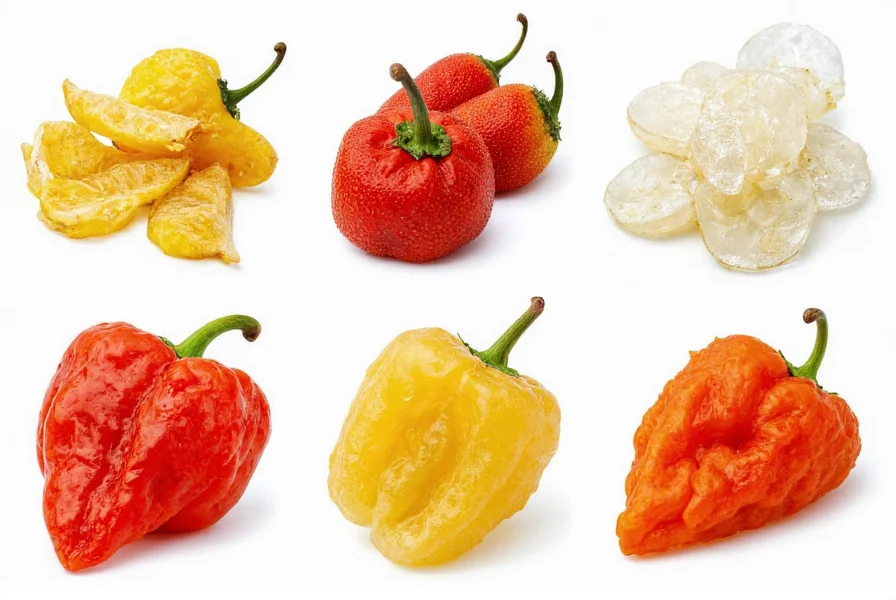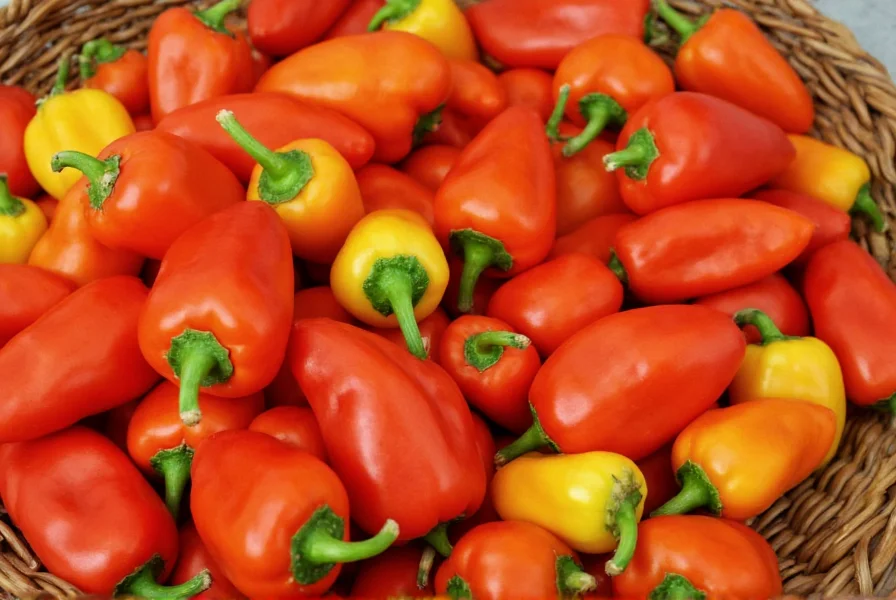These unique chili peppers have gained popularity among home cooks and professional chefs seeking complex flavor profiles. Unlike many super-hot varieties, lemon drop chilies deliver noticeable heat balanced by pronounced citrus characteristics that enhance rather than dominate dishes.
Understanding Lemon Drop Chili Characteristics
Lemon drop chilies (Capsicum chinense) stand out in the pepper world for their distinctive appearance and flavor profile. These peppers typically measure 1.5-2 inches long with a characteristic teardrop shape that gives them their name. When fully ripe, they develop a brilliant canary yellow color that makes them visually striking in both raw and cooked applications.
The heat level of lemon drop chilies places them firmly in the medium-hot category. At 30,000-50,000 Scoville Heat Units (SHU), they're significantly hotter than jalapeños (2,500-8,000 SHU) but milder than habaneros (100,000-350,000 SHU). This heat level makes them accessible to more palates while still providing a noticeable kick that builds gradually rather than hitting immediately.
| Pepper Variety | Scoville Heat Units | Flavor Profile |
|---|---|---|
| Lemon Drop | 30,000-50,000 | Citrusy, tropical, bright |
| Jalapeño | 2,500-8,000 | Grassy, vegetal |
| Habanero | 100,000-350,000 | Fruity, floral, intense heat |
| Serrano | 10,000-23,000 | Sharp, bright |
Culinary Applications of Lemon Drop Chilies
The unique flavor profile of lemon drop chilies makes them exceptionally versatile in the kitchen. Their citrus notes complement seafood dishes particularly well, making them a favorite for ceviche and fish tacos. Unlike many hot peppers that primarily add heat, lemon drops contribute both spice and distinctive flavor that enhances rather than masks other ingredients.
When incorporating lemon drop chilies into recipes, consider these professional techniques:
- Raw applications: Finely mince and add to salsas, guacamole, or salad dressings for fresh citrus heat
- Cooked dishes: Add toward the end of cooking to preserve their bright flavor profile
- Infusions: Create citrusy hot sauces or vinegar infusions by steeping peppers in liquid
- Roasting: Lightly roast to develop deeper, caramelized notes while maintaining citrus character

Growing Lemon Drop Chili Peppers
Gardeners interested in cultivating lemon drop chilies should note they require warm temperatures and consistent moisture. These peppers thrive in USDA zones 9-11 but can be grown as annuals in cooler climates with proper care. Start seeds indoors 8-10 weeks before the last frost date, as they need 70-85°F soil temperature for optimal germination.
When growing lemon drop chilies, provide:
- Full sun exposure (6-8 hours daily)
- Well-draining soil with pH 6.0-7.0
- Consistent watering (avoiding waterlogged conditions)
- Regular feeding with balanced fertilizer
The plants typically reach 24-36 inches in height and produce abundant fruit when properly cared for. Harvest peppers when they develop their characteristic bright yellow color, usually 70-90 days after transplanting. Unlike some chili varieties, lemon drops don't significantly increase in heat after picking, so harvest at peak color for best flavor.
Nutritional Benefits and Storage
Lemon drop chilies contain capsaicin (responsible for heat), vitamin C, vitamin A, and various antioxidants. The capsaicin content provides potential metabolic benefits and pain relief properties, while the vibrant color indicates high carotenoid content.
For optimal storage:
- Fresh peppers: Store in a paper bag in the refrigerator crisper drawer for up to 2 weeks
- Freezing: Freeze whole or chopped in airtight containers for up to 6 months
- Drying: String and air-dry or use a food dehydrator; reconstitute in hot water when needed
- Pickling: Preserve in vinegar with garlic and spices for refrigerator pickles

Substituting Lemon Drop Chilies
When lemon drop chilies aren't available, several alternatives can approximate their unique flavor profile. The best substitutes depend on whether you prioritize matching the heat level or the citrus flavor:
- For similar heat and flavor: A combination of yellow habanero (for citrus notes) and serrano (for moderate heat)
- For milder option: Aji amarillo peppers, which offer similar citrus notes at lower heat levels (30,000-50,000 SHU)
- For similar appearance: Yellow Scotch bonnets provide comparable color but significantly more heat
When substituting, remember that no single pepper perfectly replicates the lemon drop's unique balance of citrus flavor and moderate heat. Consider adjusting quantities based on the specific heat level of your substitute pepper and potentially adding a small amount of citrus zest to approximate the distinctive flavor profile.
Frequently Asked Questions About Lemon Drop Chili Peppers
How hot are lemon drop chili peppers compared to other common varieties?
Lemon drop chilies measure 30,000-50,000 Scoville Heat Units, making them approximately 4-6 times hotter than jalapeños but about half as hot as standard habaneros. Their heat builds gradually rather than hitting immediately, with a noticeable but manageable burn that doesn't overwhelm the palate.
Can I grow lemon drop chili peppers in containers?
Yes, lemon drop chilies grow well in containers of at least 5 gallons with proper drainage. Use a high-quality potting mix rather than garden soil, and place containers in locations receiving 6-8 hours of direct sunlight daily. Container-grown plants require more frequent watering and feeding than in-ground plants but offer the advantage of being movable to protect from temperature extremes.
What's the best way to handle lemon drop chilies without burning my skin?
Always wear disposable gloves when handling lemon drop chilies, especially when cutting or seeding them. Avoid touching your face, particularly eyes, during preparation. If you get pepper juice on your skin, wash immediately with soap and cold water (not hot, which opens pores). For persistent burning, apply milk or a dairy product to the affected area, as capsaicin dissolves in fats.
How do I know when lemon drop chilies are ripe and ready to harvest?
Lemon drop chilies are ready for harvest when they develop their characteristic bright yellow color and feel firm but slightly yielding to gentle pressure. They typically reach maturity 70-90 days after transplanting. Unlike some chili varieties, they don't continue to ripen significantly after picking, so harvest at peak color for best flavor. The peppers should detach easily from the plant with a gentle twist when fully ripe.
What dishes work best with lemon drop chili peppers?
Lemon drop chilies excel in dishes where their citrus notes can shine, including seafood preparations like ceviche and fish tacos, tropical salsas with mango or pineapple, citrus-based marinades, and light summer salads. They also work well in vinaigrettes, fresh guacamole, and as a finishing pepper for soups and stews where you want to add both heat and bright flavor without overwhelming other ingredients.











 浙公网安备
33010002000092号
浙公网安备
33010002000092号 浙B2-20120091-4
浙B2-20120091-4